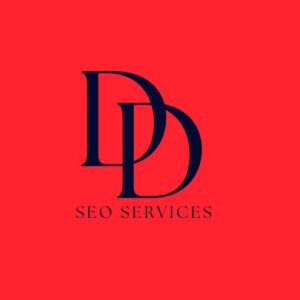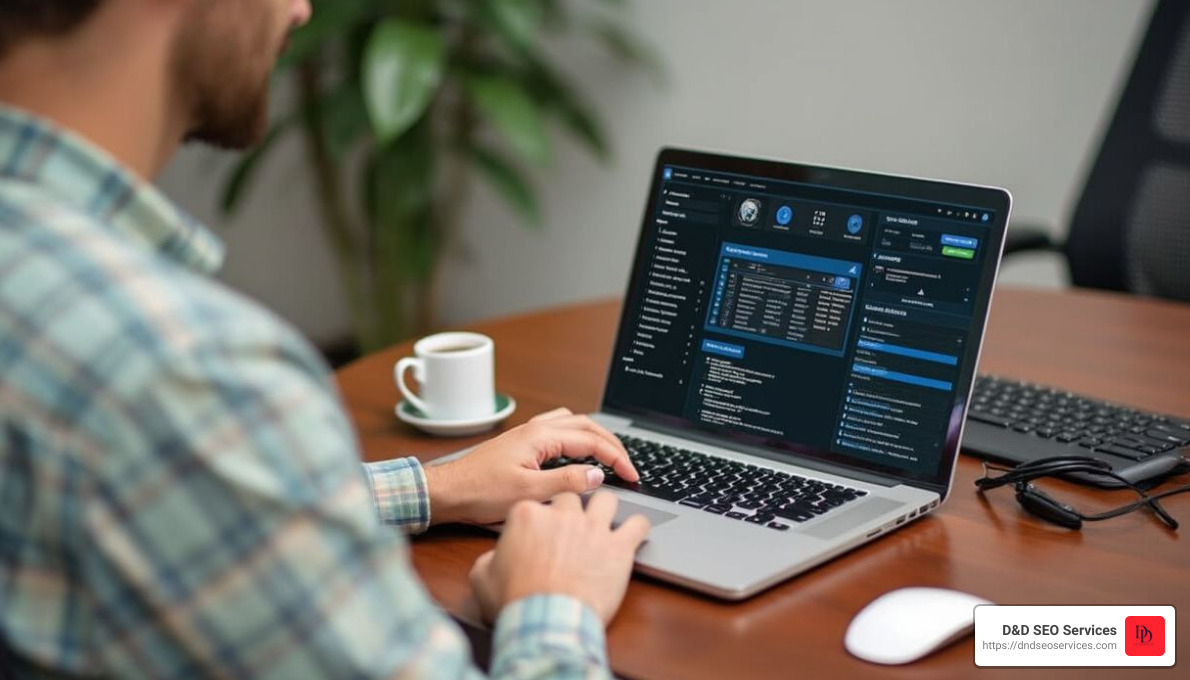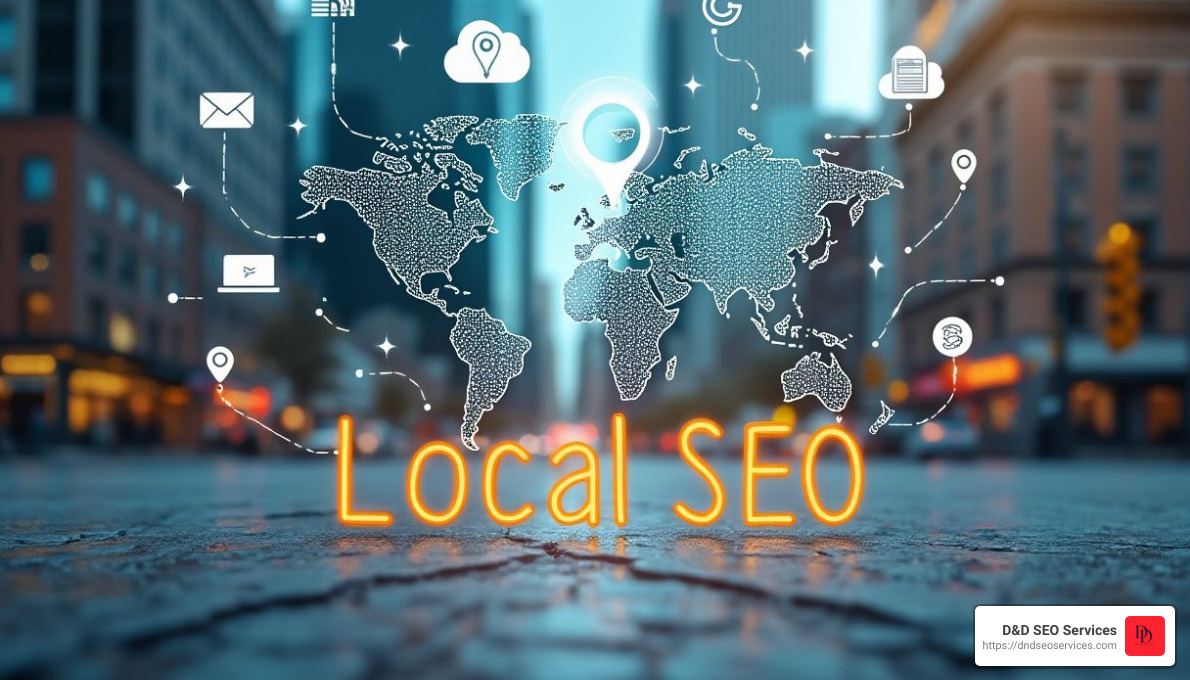Why Local SEO Matters for Pest Control Businesses
Local SEO for pest control is vital for your business to thrive in today’s digital world. With 76% of consumers checking a company’s online presence before engaging, it’s clear that a strong local presence can make or break your business. Ensuring customers find you first when searching for “pest control near me” can set you apart from your competitors.
Here’s a quick glance at why local SEO for pest control is important:
- Increased Local Visibility: Boosts your online presence within your service area.
- Higher Credibility: Ranking higher on search results increases trust.
- Cost-Effective Leads: Drives organic traffic, reducing reliance on paid ads.
- Better Customer Engagement: Helps you interact and build relationships with potential customers.
Hey, I’m Danielle Birriel, founder of D&D SEO Services. With over a decade of experience in helping local businesses, I specialize in local SEO for pest control. My team and I have a track record of boosting online visibility and attracting local customers for small businesses. Let’s dive into the strategies that can make your pest control business the go-to choice in your area.
What is Local SEO for Pest Control?
Local SEO for pest control is the process of optimizing your online presence to attract more business from relevant local searches. Think of it as making sure your pest control business shows up when people nearby search for pest control services.
Local Search Results
When someone looks up “pest control near me,” search engines like Google aim to provide the most relevant local results. This typically includes a mix of websites, Google Business Profiles, and directory listings. Showing up in these results is crucial for attracting local customers.
Google Business Profile
One of the most important tools for local SEO is your Google Business Profile (GBP). This is essentially your business’s digital storefront on Google. A well-optimized GBP can help you appear in the local 3-pack — the top three local businesses displayed prominently in local search results.
To optimize your Google Business Profile, make sure to:
- Claim or create your profile if you haven’t already.
- Fill out all essential information like your name, address, phone number, hours, and services.
- Add high-quality photos to attract more clicks.
- Collect and respond to reviews to build trust and engagement.
Directory Listings
Directory listings are another key component. These are online directories like Yelp, Bing Places, and local chamber of commerce listings where your business can be featured.
Consistency is key here. Ensure your Name, Address, and Phone number (NAP) are the same across all platforms. This consistency helps search engines trust your business information, boosting your rankings in local search results.
Some tips for directory listings:
- Register your business on respected online directories.
- Keep your information consistent across all listings.
- Engage with local partners to get backlinks from their websites.
By focusing on these elements, you’ll be well on your way to mastering local SEO for pest control. Up next, let’s explore how to get started with local SEO for your pest control business.
Why Local SEO is Crucial for Pest Control Companies
Reach Your Target Market
Local SEO helps pest control companies connect with people in their service area. When someone searches for “pest control near me” or “exterminator [city name],” your business can show up at the top. This means you are directly reaching people who need your services right now.
Fact: 88% of consumers search for local information on mobile devices. This makes local SEO essential for reaching potential customers who are on the go.
Increase Qualified Leads
Local SEO targets people who are actively searching for pest control services in your area. This is different from broad advertising methods like billboards, which reach a general audience. With local SEO, you’re focusing on people who are more likely to become your customers.
Statistic: Conversions are more than twice as likely after a local search compared to searches without local intent. This means local SEO can significantly boost your chances of turning searches into sales.
Optimize Marketing Costs
Local SEO is cost-effective. Unlike traditional advertising, which can be expensive and broad, local SEO targets specific people who are looking for pest control services. This makes your marketing dollars work harder for you.
Quote: “SEO evens the playing field by boosting your website’s search ranking, allowing you to compete with larger companies on equal terms, even with a limited budget.” – Rohan Inns, Marketing Specialist
Boost Visibility
When someone searches for pest control services in your area, you want your business to appear first. Local SEO helps you achieve this by making your business more visible in local search results, Google Maps, and online directories.
Fact: Searches with the words “near me” and “local” have increased by 200%. This trend makes local SEO more important than ever for pest control companies.
Build Credibility
Being at the top of local search results builds trust with potential customers. People are more likely to choose a business that appears at the top of search results because it seems more credible and reliable.
Case Study: One of our clients, a small retail store, saw a 50% increase in foot traffic after implementing local SEO strategies. This shows how effective local SEO can be in building trust and attracting more customers.
In summary, local SEO is essential for pest control companies to reach their target market, increase qualified leads, optimize marketing costs, boost visibility, and build credibility.
Next, let’s explore how to get started with local SEO for your pest control business.
How to Get Started with Local SEO for Pest Control
Claim and Optimize Your Google Business Profile
The first step in improving your local SEO is to claim your Google Business Profile. This profile is crucial for local searches and can help your pest control business appear in the local 3-pack on Google.
- Complete Your Profile Information: Make sure to fill out every section of your profile with accurate details. Include your business name, address, phone number, hours, and website URL. This helps customers trust your business and signals to Google that your business is reliable.
- Gather and Respond to Reviews: Encourage satisfied customers to leave positive reviews. Respond to all reviews, both positive and negative, to show that you value customer feedback. Engaging with reviews boosts your credibility and visibility.
- Upload High-Quality Photos: Add compelling images of your team, equipment, and successful pest control interventions. High-quality photos make your profile more appealing and trustworthy.
- Use Google Posts: Share updates, promotions, and relevant content directly on your profile. Regular posts keep your information fresh and can improve your visibility in local search results.
Conduct Local Keyword Research
To attract local customers, you need to target localized keywords. Use keyword research tools like Keywords Everywhere, Ahrefs, and Semrush to find keywords relevant to your service area.
- Localized Keywords: Focus on keywords that include your neighborhood, city, or state. For example, “pest control in Brooklyn” or “exterminator Los Angeles.”
- Search Volume and Competitiveness: Look for keywords with a good search volume but low competition. These keywords can drive more traffic and leads.
Create Location-Specific Content on Your Website
Content quality is key to standing out in search results. Make sure your content is helpful, unique, and trustworthy.
- Use Localized Keywords: Incorporate your target keywords naturally within the first 100 words of your content. This helps search engines understand your content’s relevance to local searches.
- Organize Your Content: Use header tags (H2s, H3s), short paragraphs, and lists to make your content easy to read. This improves user experience and helps with SEO.
- Showcase Your Expertise: Include case study photos, video walkthroughs, and first-hand experiences from your technicians. This adds authority and originality to your content.
Ensure Accuracy and Consistency of Your NAP Citations
Consistency is crucial for local SEO. Ensure your Name, Address, and Phone number (NAP) are consistent across all online listings.
- Citations: List your NAP information in major directories like Yelp, Bing Places, and other relevant platforms.
- Monitor Your Listings: Regularly check and update your listings to avoid discrepancies. Inconsistent information can confuse search engines and potential clients.
Grow Your Website’s Backlink Profile
Backlinks from reputable sites signal to search engines that your site is trustworthy and authoritative.
- Produce Original Content: Share helpful and unique content like case studies, research, and interactive tools. This can attract backlinks naturally.
- Conduct Outreach: Reach out to local businesses and industry-related websites to build backlinks. This process can be time-intensive but is highly effective.
- Local Partnerships: Forge partnerships with local hardware stores, real estate agencies, and environmental groups to gain local backlinks. This boosts your local SEO performance.
By following these steps, you can improve your local SEO and attract more customers to your pest control business. Next, let’s dive into the technical aspects of SEO for pest control websites.
Technical SEO for Pest Control Websites
Technical SEO ensures your website is easy for search engines to crawl and index. It also improves the user experience. Let’s break down the key elements:
Page Speed
A slow website can frustrate visitors and hurt your rankings. Here’s how to speed things up:
- Optimize Images: Compress images to reduce load times. Use formats like JPEG or PNG.
- Minify CSS and JavaScript: Remove unnecessary code to speed up your site.
- Leverage Browser Caching: Store some data in visitors’ browsers to prevent re-loading the same information.
- Improve Server Response Time: Choose a reliable hosting service that guarantees fast response times.
Website Experience
A user-friendly website keeps visitors engaged and improves your SEO. Focus on:
- Simplified Navigation: Make it easy for users to find what they need. Use straightforward menus and clear labels.
- Form Optimization: Ensure forms are easy to fill out, especially on mobile devices. Use large input fields and clear labels.
Mobile Optimization
Most local searches happen on mobile devices. Your site must be mobile-friendly:
- Responsive Design: Ensure your site adapts to different screen sizes.
- Accelerated Mobile Pages (AMP): Consider AMP for fast-loading content on mobile.
- Touch-Friendly Interfaces: Use larger clickable areas for navigation buttons and links.
Crawlability
Search engines need to crawl your site to index it. Ensure they can do this easily:
- Robots.txt: Use this file to guide search engine bots. Block them from indexing unnecessary pages.
- XML Sitemaps: Create an XML sitemap that lists all your pages. Submit it to Google Search Console and Bing Webmaster Tools.
Security
A secure website is trusted by both users and search engines. Implement these measures:
- HTTPS: Ensure your site uses HTTPS instead of HTTP. This encrypts data between the user and your website.
- Regular Updates: Keep your website software, plugins, and themes up-to-date to protect against vulnerabilities.
By focusing on these technical aspects, you can improve your website’s performance and visibility in search engines. Next, let’s explore common mistakes to avoid in local SEO for pest control.
Common Mistakes to Avoid in Local SEO for Pest Control
Ignoring Local Optimization
Neglecting local SEO is a common pitfall. Many pest control businesses focus broadly, missing out on local customers who are their primary market. Ensure your online presence is optimized for local searches. Claim and verify your Google Business Profile. This helps you appear in local search results when customers look for services like yours.
“Local customers are your bread and butter; don’t miss out on them by focusing solely on broader SEO tactics.”
Keyword Stuffing and Over-Optimizing Content
Quality over quantity matters. Stuffing your content with keywords might seem like a quick win, but it can actually hurt your rankings. Google values user experience. Optimize naturally, focusing on providing valuable information rather than forcing keywords into every sentence.
“Make your content reader-friendly, not just search engine-friendly.”
Ignoring Mobile Optimization
With more people using mobile devices, having a mobile-friendly website is non-negotiable. Google considers mobile-friendliness in its rankings. Ensure your site is responsive. A slow website and poor mobile experience can drive potential customers away, hurting your business.
“In the world of pest control, mobile users have little patience for slow-loading websites, and neither do search engines.”
Outdated Tactics
SEO is a dynamic game. Using outdated tactics can harm your rankings. Regularly update your strategies to align with industry trends and algorithm changes. Consistent monitoring and adaptation will keep your online presence robust and pest-resistant over time.
“Stay current with industry trends and algorithm changes to maintain a strong online presence.”
By avoiding these common mistakes, you can create a more effective local SEO strategy for your pest control business. Next, let’s dive into some frequently asked questions about local SEO for pest control.
Frequently Asked Questions about Local SEO for Pest Control
How much should I charge for local SEO?
Pricing for local SEO can vary widely based on the scope of services and expertise of the SEO provider. On average, small businesses can expect to pay between $2,500 to $7,500 per month for comprehensive services. Hourly rates typically range from $75 to $100 per hour. Be cautious of rates higher than $150 per hour as they might be overpriced.
SEO agencies often offer different pricing models:
- Hourly Rates: Ideal for smaller projects or consultations, usually ranging from $50 to $100 per hour.
- Monthly Packages: These provide a fixed monthly fee, offering a predictable expense. Packages may range from $699 to $1,499 per month.
- Project-Based Fees: One-time costs for specific projects like a site audit or keyword research, depending on the project’s scope.
Choosing the right package depends on your specific needs and budget. Always ensure you understand what services are included in the package you choose.
How do I get customers in pest control?
Getting customers in pest control requires a mix of online and offline strategies. Here are some effective methods:
- Google Ads: Running targeted ads can quickly drive traffic to your website. Focus on keywords like “pest control near me” or “termite treatment Las Vegas.”
- Social Media: Platforms like Facebook and Instagram are great for engaging with your local community. Share tips, success stories, and promotions to attract potential customers.
- Lead Generation: Use forms on your website to capture leads. Offer free inspections or discounts to incentivize sign-ups.
- Content Marketing: Create blog posts and videos addressing common pest problems and solutions. This positions you as an expert and helps with SEO.
- Local Search Results: Optimize your Google Business Profile and get listed in local directories. This increases your visibility when people search for pest control services in your area.
What is an example of a local SEO?
A good example of local SEO is optimizing your Google Business Profile. Here’s a step-by-step guide:
- Claim Your Profile: Ensure your business is listed on Google and claim your profile.
- Fill Out Your Information: Complete every section with accurate details, including your business name, address, phone number (NAP), hours, and services.
- Add Photos: Upload high-quality images of your team, office, and pest control work.
- Collect Reviews: Encourage satisfied customers to leave positive reviews. Respond to all reviews to show engagement.
- Post Updates: Use Google Posts to share news, promotions, and updates about your services.
By focusing on these elements, you can improve your local search rankings and attract more customers.
Next, we’ll explore the technical aspects of SEO for pest control websites.
Conclusion
Local SEO is crucial for pest control businesses. It helps you reach your target market, increase qualified leads, and optimize marketing costs. By focusing on local SEO, you boost your visibility and credibility in your service area.
At D&D SEO Services, we specialize in helping pest control companies dominate their local markets. Our team has experience in creating personalized strategies that cater to your unique needs. We understand that each location has its own audience and market conditions. That’s why we tailor our approach to ensure maximum impact.
Local SEO is not a one-time effort. It requires ongoing attention and adaptation to stay effective. Regularly update your Google Business Profile, conduct local keyword research, and create location-specific content. Ensure your NAP citations are accurate and consistent, and grow your website’s backlink profile.
By partnering with D&D SEO Services, you can focus on what you do best—providing top-notch pest control services—while we handle your local SEO. Together, we can achieve significant growth and make your business the go-to choice in your community.
Ready to boost your local presence? Let’s get started today!









